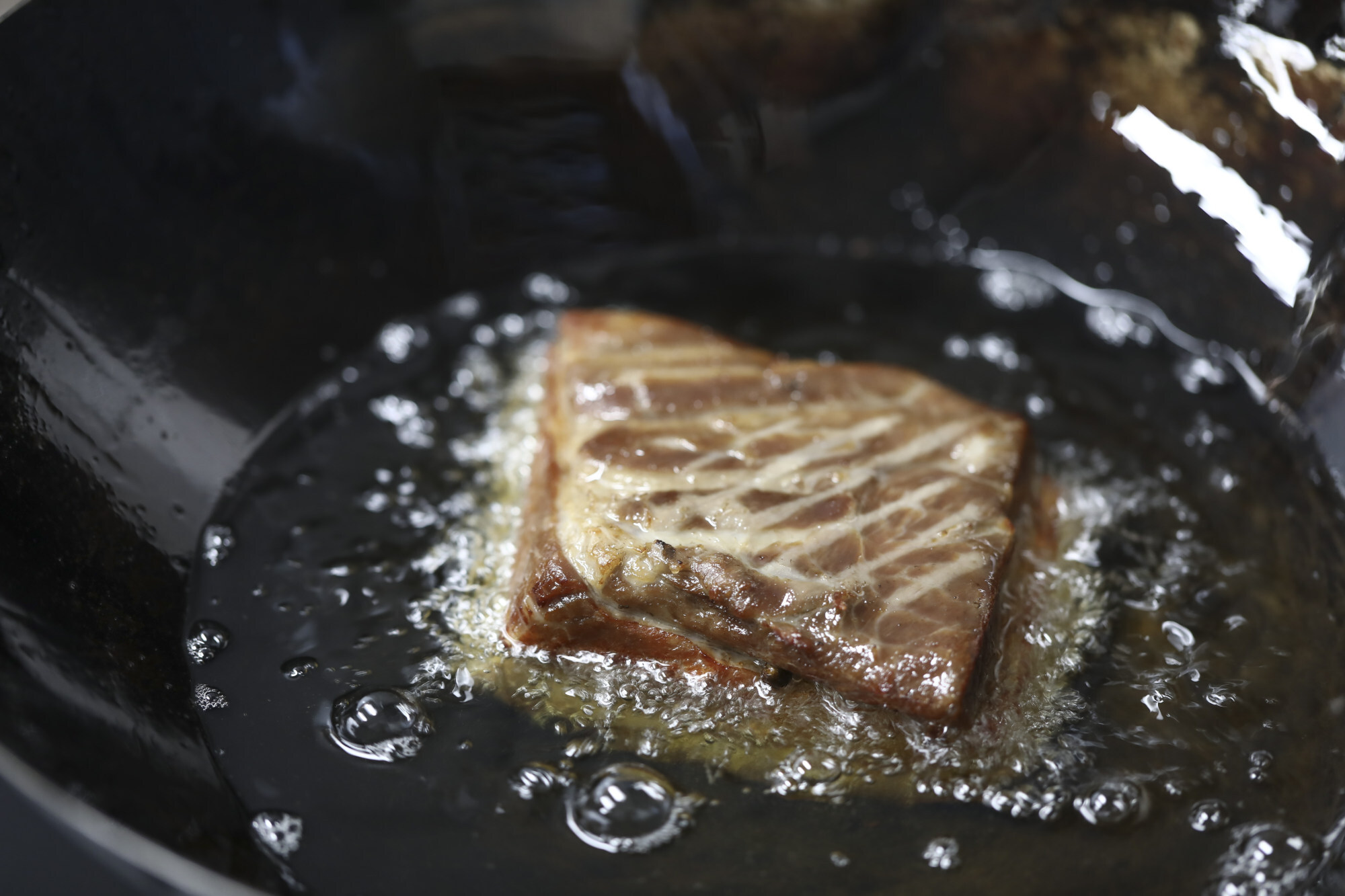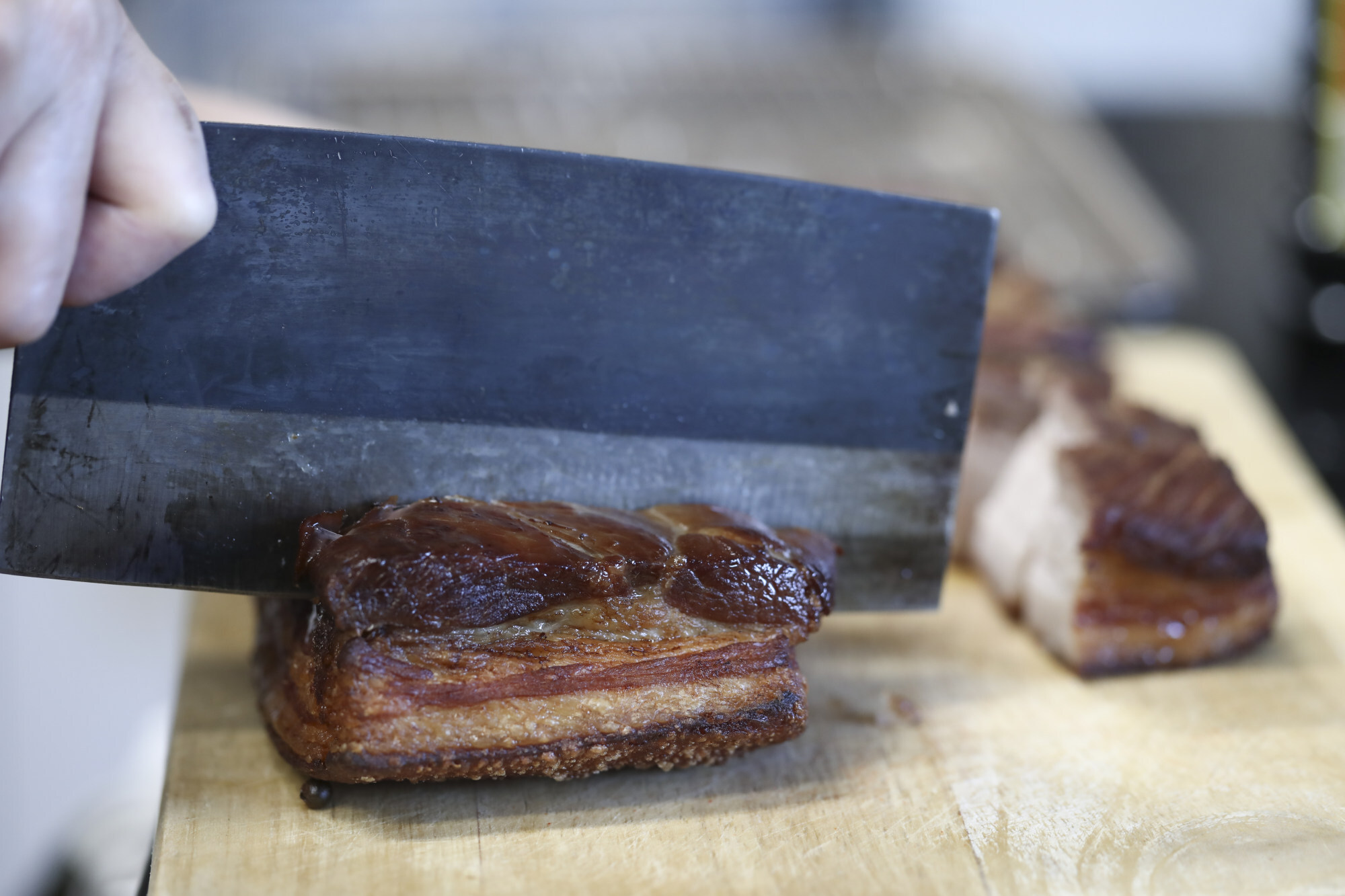
How to make lechon kawali – Filipino-style crispy pork belly simmered, air-dried then deep-fried, and served with a spicy tart sauce
- Lechon kawali is an easier, deep-fried version of a Filipino whole roast young pig dish, made using pork belly
- The pork belly is first simmered, then dried in a fridge for eight hours, before being deep-fried twice
The Philippines is heaven for pork lovers. Probably the most impressive dish is lechon, where a young pig is roasted whole until the meat is succulent and the skin is crisp, then served as the centrepiece to a feast.
But pork is used in many other dishes, and no part of the animal is wasted: the blood and innards are made into dinuguan, a stew which is far more delicious than it looks; the head and other extremities left over from lechon can be chopped up and used for sisig; the meat is used to flavour vegetables; and, of course, one of the most popular versions of adobo is made with pork belly.
Lechon kawali

It’s a bit messy – and you have to take care because the hot oil can spit everywhere – but at least it doesn’t require having a barbecue pit.
Choose a skin-on piece of pork belly that weighs about 1kg (35oz) – the layers of fat should not be too thick. Start the lechon the day before you want to eat it, to give the meat time to air-dry in the fridge.
How to make black pepper chicken, a Chinese restaurant favourite
Ingredients:
-
1 piece of skin-on pork belly, about 1kg (35oz)
-
Fine sea salt, as necessary
-
2 tbsp black peppercorns
-
1 head of garlic
-
1 onion, about 275 grams (9½ oz), peeled
-
3 bay leaves
-
White vinegar, for brushing
-
Cooking oil, as necessary
A Chinese recipe for lamb chops – spicy, numbing and bursting with flavour
For the dipping sauce:
-
Soy sauce, preferably Filipino soy sauce
-
Coconut vinegar
-
Calamansi limes (optional)
-
Red and green bird’s-eye chillies
-
Garlic cloves, peeled
1 Cut the pork belly into two pieces and dry them with paper towels. Place the pieces on a cutting board and sprinkle salt lightly but evenly on the skin and meat, including the sides. Place the pieces in a container, then cover and refrigerate for at least eight hours.
2 Take the pork out of the container and wipe off the excess salt. Roughly crush the peppercorns in a mortar. Break the head of garlic into individual cloves, then peel them. Thickly slice the onion.

3 Pour two litres of water into a large pot and add the peppercorns, garlic cloves, onion, bay leaves and 10 grams (2 tsp) of salt. Place over a medium-high flame and bring to a boil. Add the pork belly and bring to a boil again, then lower the heat, partially cover the pot with the lid and simmer until the skin and meat can be easily pierced with a knife (about 90 minutes), turning over the pieces as necessary.
4 Carefully lift the pork out of the pot and place it skin-side up on a cooling rack. Cool to room temperature, then place the meat – uncovered, and still on the rack – in the fridge for about two hours, so it firms up.

5 Use a meat spike (or a sharp paring knife) to poke holes in the skin of the pork, piercing down into the fat layer. Brush the skin with white vinegar, then refrigerate, uncovered (and still on the rack) for at least eight hours.

6 Pour oil in a pan to the depth of about 3cm (1¼ inches) and place it over a medium flame. Heat the oil to 160 degrees Celsius (320 degrees Fahrenheit). Put the pork pieces skin-side down in the hot oil and fry for about five to eight minutes, or until the exterior is light-medium brown. Turn over the pieces as necessary, and adjust the flame as needed to maintain the correct heat of the oil. Take the pork out of the oil and place the pieces skin-side up on the rack and leave for about five minutes.

7 Reheat the oil to 170 degrees Celsius (340 degrees Fahrenheit). Place the pork pieces skin-side down in the hot oil and fry briefly, for about three minutes, or until the skin blisters and the meat is medium-brown, turning over the pieces as necessary. Place the pork belly skin-side up on the cooling rack.
8 Make a dipping sauce by mixing soy sauce with vinegar (or calamansi juice), chopped chillies and garlic to taste.

9 Cut the pork belly into bite-size pieces; use a sharp cleaver, and cut it skin-side down. Put the pieces on a plate and serve with the dipping sauce.
Styling: Nellie Ming Lee. Kitchen: courtesy of Junk Kitchen

